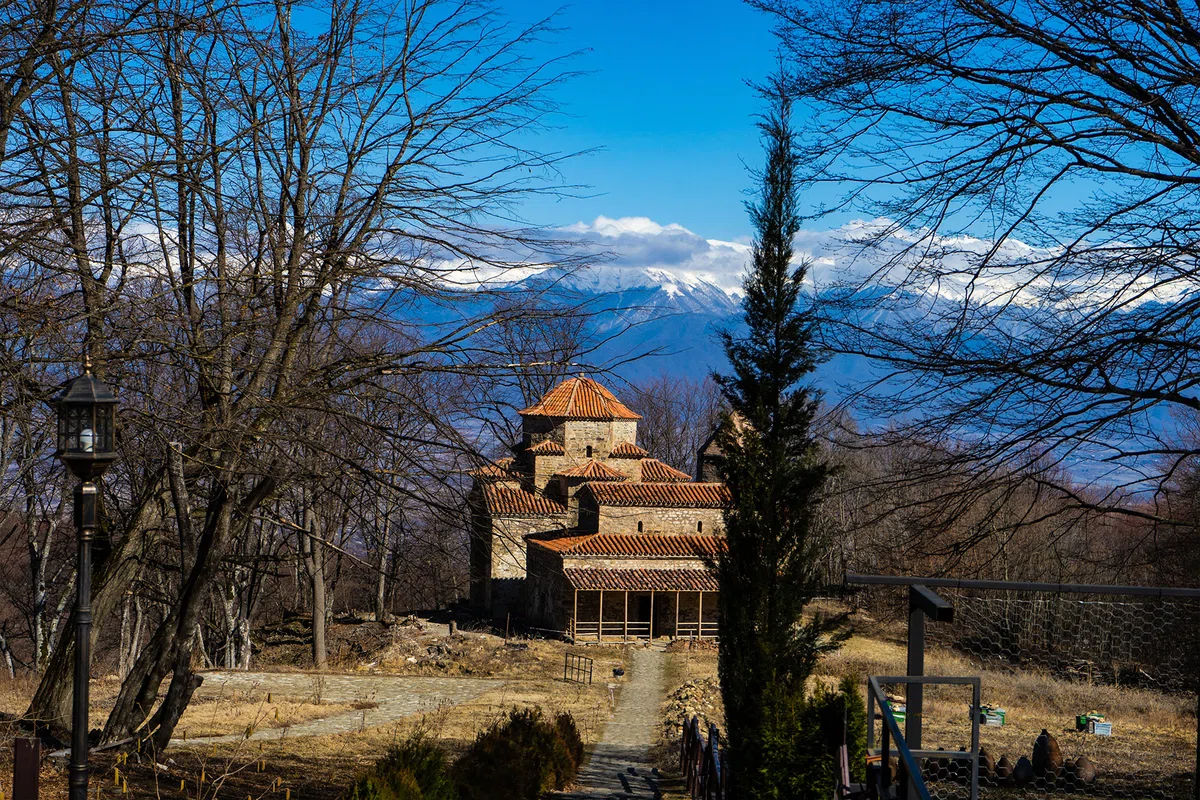
The inner walls of the temple Shuamta are decorated with unique fresco paintings. It is worth visiting this monastery, there is a lot to see in Georgia.
The monastery complex of Staraya (Dzveli) Shuamta is built of local stone and cobblestone, harmoniously fits into the landscape and is a landmark of Georgia.
The medieval Dzveli Church is located in the picturesque region of Kakheti, famous for its wineries. The monastery is surrounded by a broad-leaved forest and is located near the town of Telavi. This monastery is a representative of the Georgian Orthodox Church. Many experienced tourists refer these surroundings to the most beautiful places in Georgia, and this is not surprising.
The church complex includes: the basilica, built in the 5th century AD, the 7th century church, which attracts attention with its massive dome. There are slightly smaller churches nearby, their shape resembles a cross, there is definitely something to see in Georgia. The material for the construction of the entire monastery complex was stone and cobblestones, which were mined from nearby mountains. Such buildings do not stand out from the general landscape, becoming part of it and complementing the surrounding nature. The corners of the churches are lined with travertine.
Unfortunately, after many centuries of the existence of the monastery complex, in the 16th century it was abandoned. Services were no longer held in Dzveli-Shuamt, and pilgrims passed by this place. Due to the lack of proper maintenance, the buildings rapidly turned into ruins.
In the second half of the 16th century, the Queen of the Catechia Tinatin undertook the restoration of the monastery, she built a new Shuamta temple. The main building of the New Shuamta Church was made of brick and had the same cruciform structure as its predecessors. The interior walls of the main hall of the church are decorated with murals and frescoes depicting portraits of saints and scenes from the Holy Scriptures.
The sights of Georgia are very revered, every local resident cares about the preservation of the cultural riches of the country. This tradition did not appear just like that, its roots go deep into the Middle Ages. Even a hundred years later, the church was maintained in good condition thanks to the care of King Levan II, he was engaged in its renovation and expanded the entire complex, thanks to the construction of the bell tower and other buildings. Under the foundation of the church is the tomb of an unknown saint, scientists still cannot say exactly who is buried there.
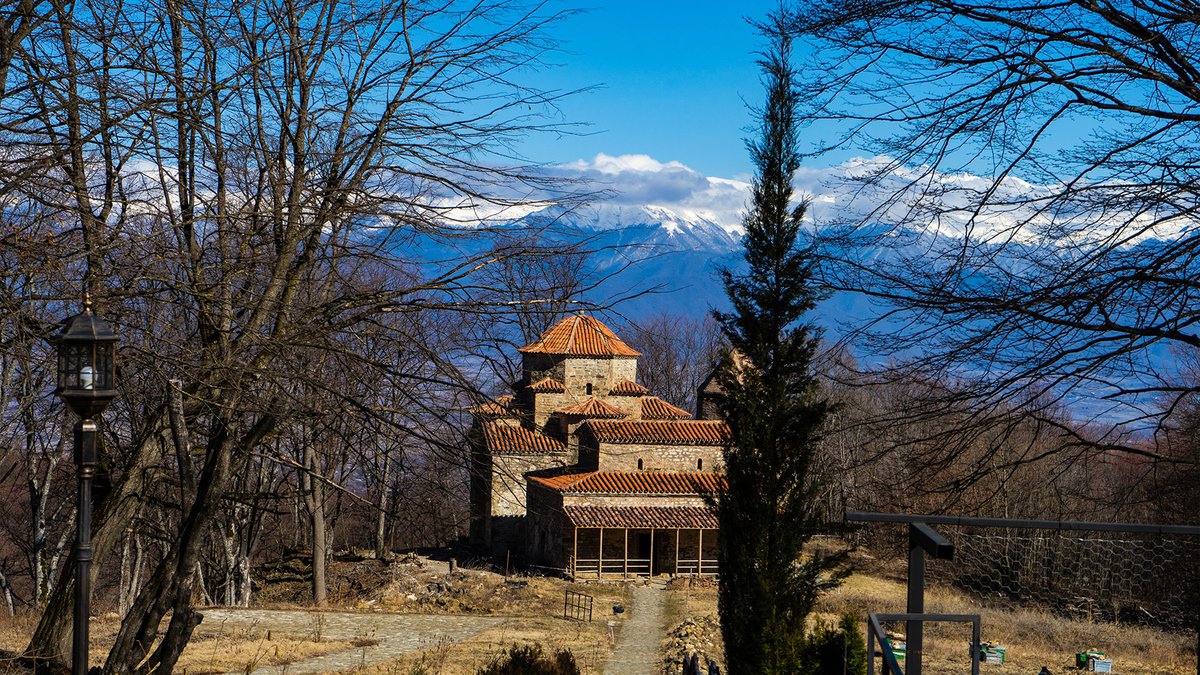
See all the sights of Georgia
-
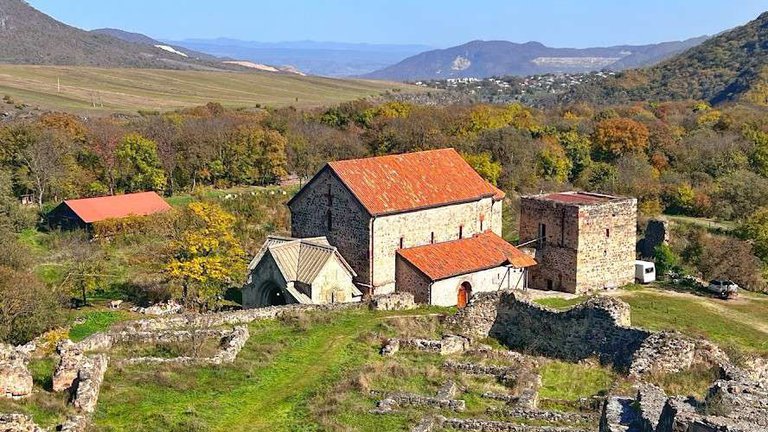
🏰 Dmanisi Sioni: An architectural wonder and an important religious center of Georgia 🌍
Sights of GeorgiaThe Dmanisi Cathedral of the Mother of God is one of the oldest churches in Georgia, buil…
-

🔮 Church of the Ascension in Ozaani: History, frescoes and architectural features of one of the most interesting sights of Georgia!
Sights of GeorgiaVisit the unique church in Ozaani! Find out how to get there, what to take with you, wher…
-

Besletsky Bridge in Abkhazia: Legends, Secrets and How to Get to This Ancient Miracle
Sights of GeorgiaHow to get to the Besletsky Bridge in Abkhazia? Where to spend the night, what to take wi…
-
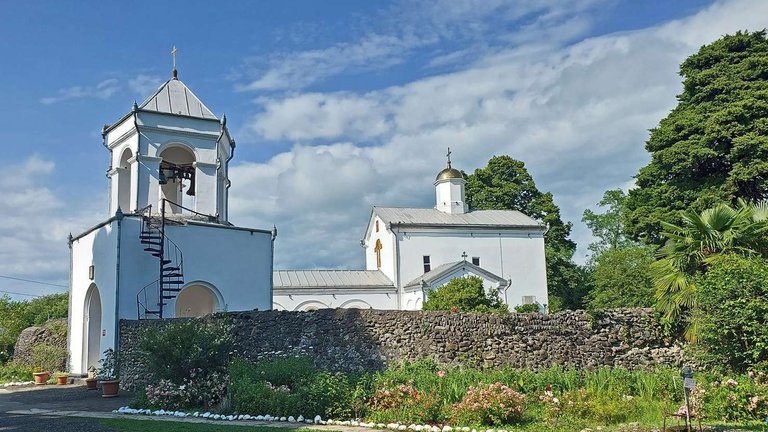
Ilori Temple in Abkhazia: Tragedy of Restoration, Disappeared Relics and Secrets Shrouded in Darkness
Sights of GeorgiaFind out everything about the Ilori Temple in Abkhazia: how to get there from different c…
-
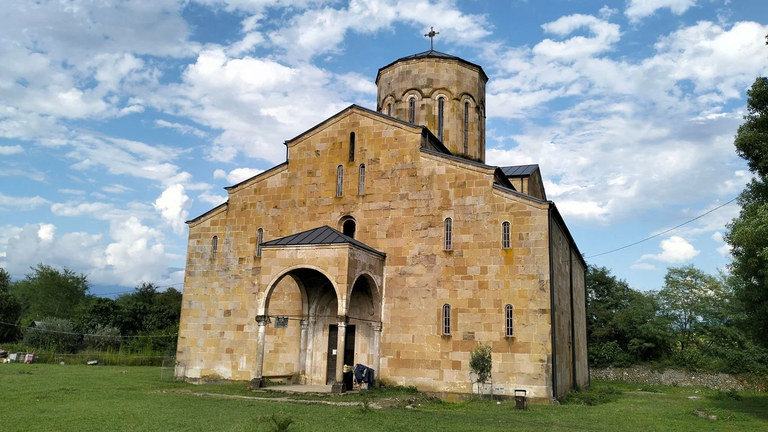
A place that defies restoration: why is the Mokva Cathedral in Abkhazia called cursed and sacred at the same time?
Sights of GeorgiaPlanning a trip to Abkhazia? Don't miss the Mokva Cathedral, one of the most ancient chur…
-
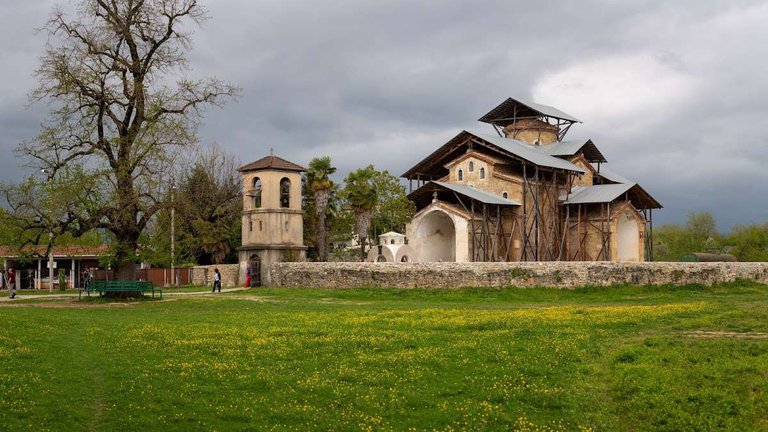
The Lykhny Church of the Dormition of the Blessed Virgin Mary is a 10th century mystery that is worth revealing!
Sights of GeorgiaFind out how to get to the temple, what to see nearby, where to eat and stay, and what sp…
-

Dranda Cathedral of the Dormition of the Blessed Virgin Mary - Find out what one of the oldest temples in Abkhazia hides
Sights of GeorgiaFind out what the Dranda Cathedral in Abkhazia hides behind it! 🌍 Discover the mysterious…
-
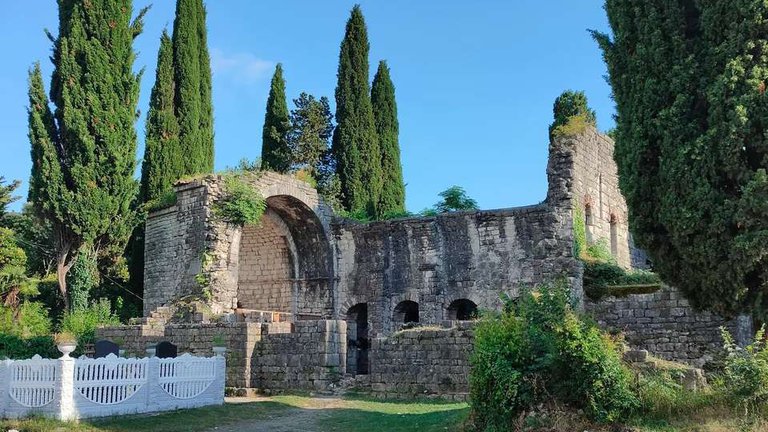
Tsandripsh Basilica: a unique Byzantine temple in Abkhazia that you must see!
Sights of GeorgiaThe Tsandrypsh Basilica is one of the most mysterious and unique sights of Abkhazia. Lear…












28 comments
Log in to leave a comment
Благодаря их отношению, мы сегодня можем тоже своими глазами увидеть такую красоту!